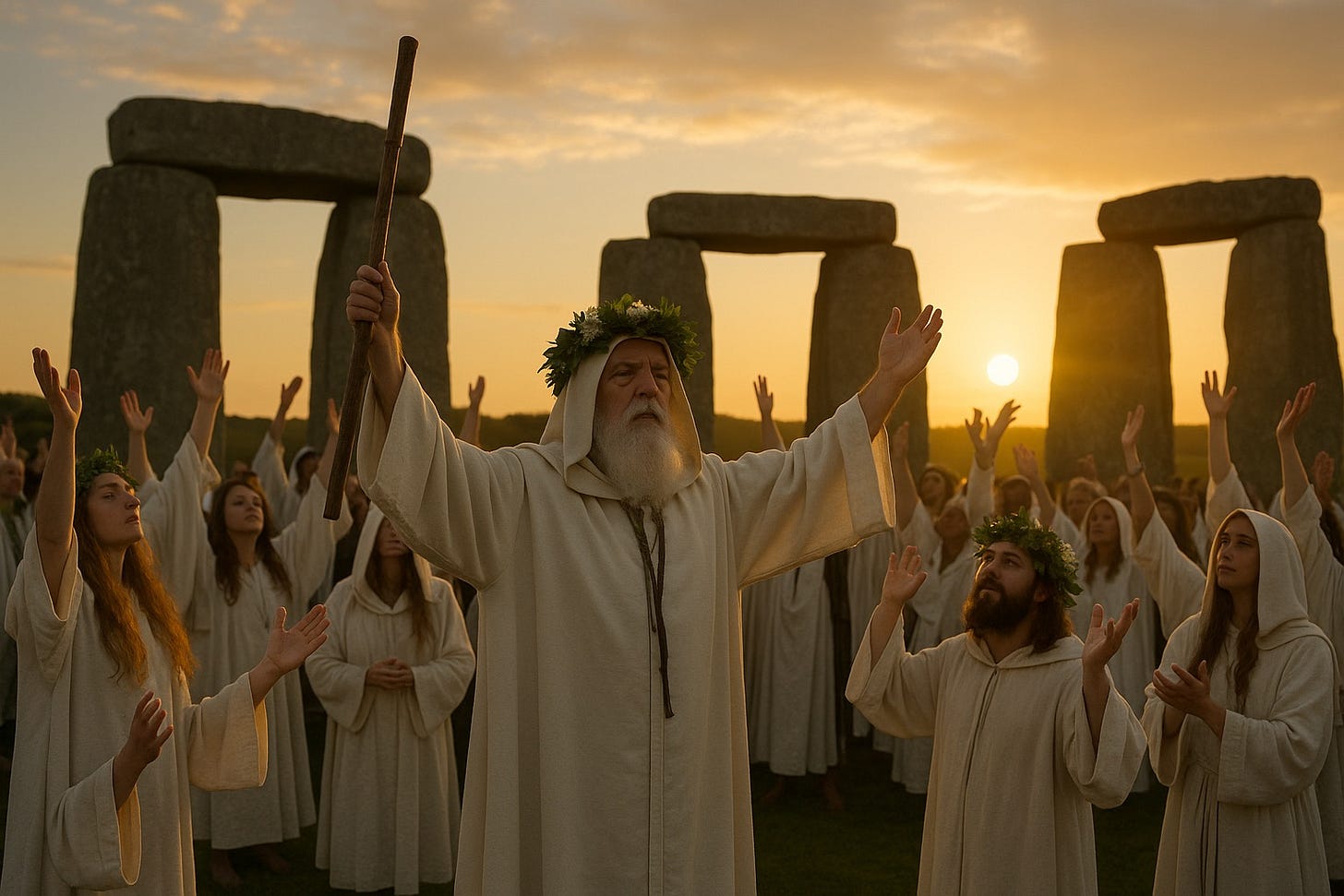Stonehenge and the Invention of Tradition: A Reflection on Neopaganism
Iceland has long suffered from the relentless desire of tourists to visit places where supposedly ancient customs still survive—lands where the hollow formalities of Christianity have not entirely displaced older, more “authentic” forms of worship, magic, and spirituality. Across the urbanized world, people yearn for a return to nature and some form of spiritual depth, and wherever that yearning arises, there is always someone ready to exploit it. Fake rune sets—used for divination and entirely unrelated to Icelandic tradition—are sold in abundance and, evidently, eagerly purchased. Tacky books on Norse mythology, often written by unqualified enthusiasts parroting expired public-domain sources, flood the market. Titles promising secret knowledge of “Norse magic” or “the Viking way of life”—whatever that even means—fill shop shelves throughout the country.
This phenomenon is hardly new. As early as the 19th century, British landowners were already monetizing the Romantic fixation on ancient origins and druidic Britain by selling access to Stonehenge to those who claimed it as a sacred site of their “ancient” druidic religion. Never mind the historical reality: druids belonged to an Iron Age Celtic culture that had absolutely no connection to the Neolithic builders of Stonehenge.
Each year at the solstices, hundreds gather at Stonehenge to celebrate what they perceive as ancient rites. Clad in robes, some self-styled as druids, others as witches or pagans, they participate in ceremonies meant to honor a spiritual connection with pre-Christian Europe. For many, these gatherings are meaningful expressions of identity, reverence for nature, or a search for spiritual authenticity. Yet, for all their sincerity, these rituals rest on fragile historical ground – or on no ground at all.
The truth is that we know very little about the religious practices of pre-Christian Europe. The Celts left no written records of their rituals, and much of what we think we know about the Druids comes from Roman authors—outsiders whose accounts were often shaped by propaganda or exoticism. Germanic and Nordic sources, such as the Eddas, were written down centuries after Christianization, often through a Christian lens and they do not help in reconstructing what exactly these people did when they celebrated religious rites. Even where archaeological evidence exists, it offers fragments—sacrificial pits, votive offerings, iconography—but not coherent systems of belief or practice. We don’t know how they dressed, what words they uttered, how they placed themselves in the sacred spaces, what these species may have been, what gestures and acts were performed… nothing!
In this light, neopaganism is best understood not as a reconstruction of ancient religion, but as a modern spiritual creation inspired by the desire of a different past from the Christian/secular one that most of us have inherited from the Y, X and Boomer generations. People tired with Christianity or atheism/materialism have sought to create new forms of spirituality, but they also decided that was not enough: they needed to provide those new spiritualities with an ancient pedigree.
Movements such as Wicca, Druidry, and various forms of Norse paganism were developed in the 19th and 20th centuries, drawing on folklore, Romantic nationalism, and occultism, but they all claim to be more ancient than what they really are. Gerald Gardner, often considered the founder of Wicca, was heavily influenced by the esoteric revival of his time. The “druid orders” that appear at Stonehenge today trace their origins not to antiquity, but to 18th-century British fraternal societies with only a loose connection to ancient Celtic cultures.
This is not to say that these practices are invalid. Spiritual traditions are always evolving, and many of the world’s major religions have integrated elements from earlier or neighboring systems. However, it is important to recognize the difference between historical continuity and imaginative revival. The rituals at Stonehenge are not rediscovered rites, but modern interpretations—beautiful and meaningful to their participants, but not reflections of a lost and recoverable past.
Moreover, the association of Stonehenge with Druidry is largely a product of 17th- and 18th-century antiquarian speculation. The monument predates the historical Druids by more than a thousand years. Its original builders belonged to a Neolithic culture whose beliefs remain obscure. While there is nothing inherently wrong with using ancient sites as spaces for contemporary ritual, doing so in the name of “tradition” must be approached with humility and a critical awareness of history.
At its best, modern paganism reflects a desire to reconnect with nature, to resist the disenchantment of modern life, and to find meaning outside institutional religion. These are legitimate and even commendable impulses. But they should not be mistaken for historical revivals. To honor the past, we must first accept how little of it is truly knowable. And in doing so, we might find that our yearning for ancient wisdom says more about our present needs than about the ancient world itself.






